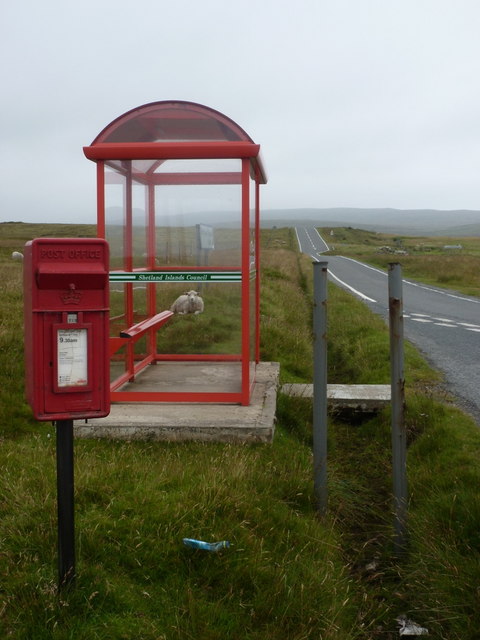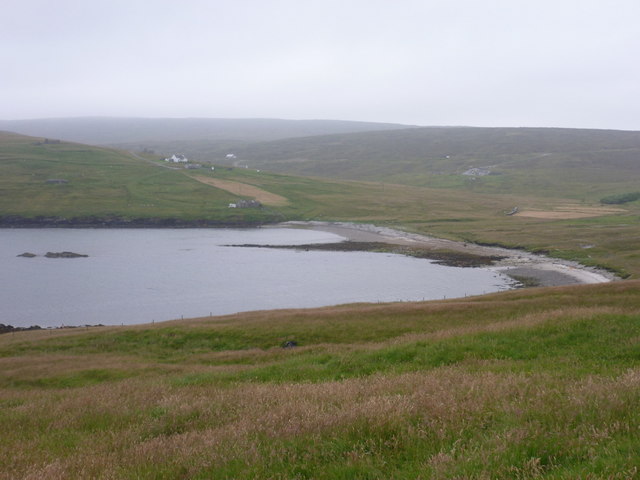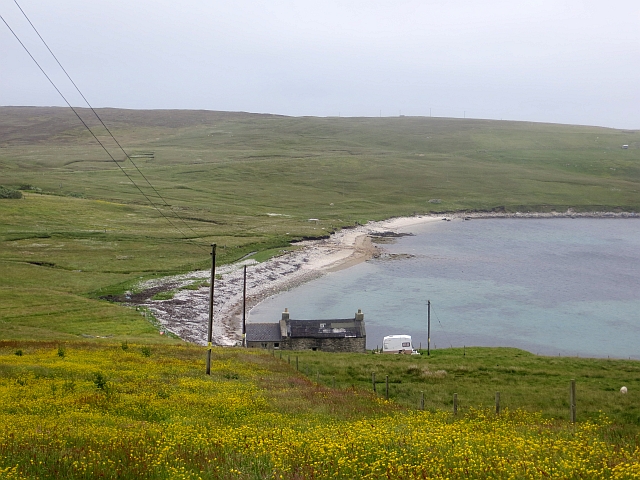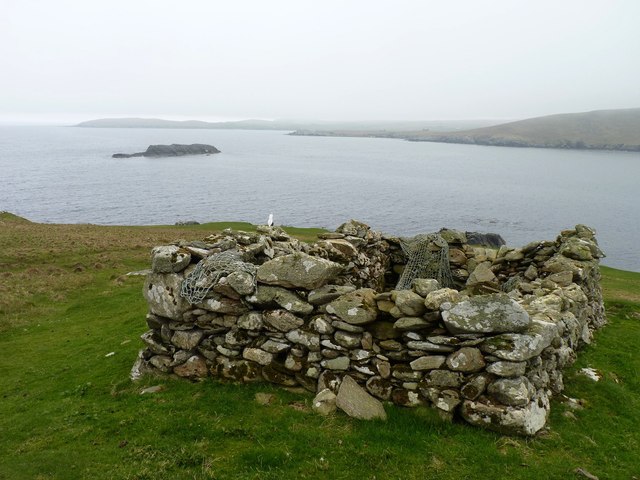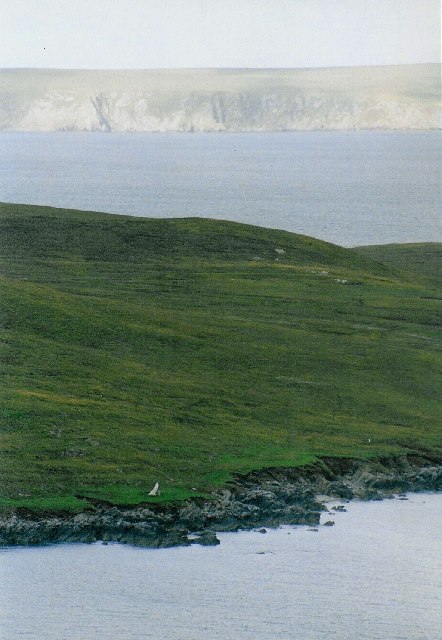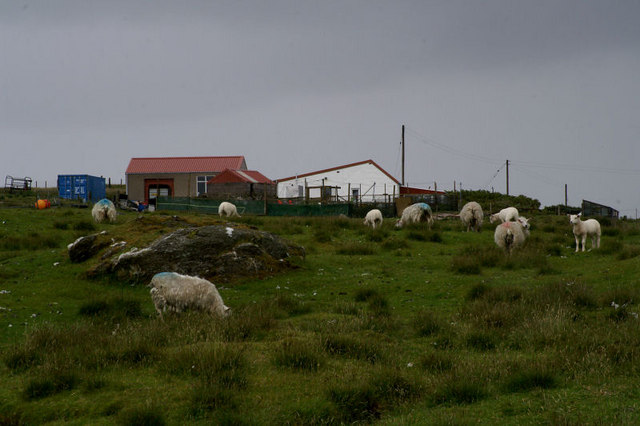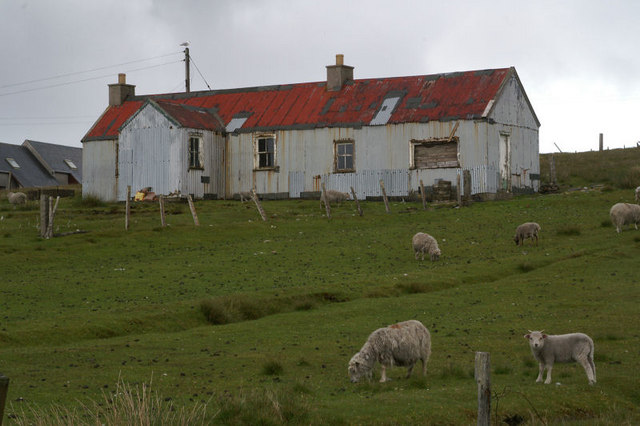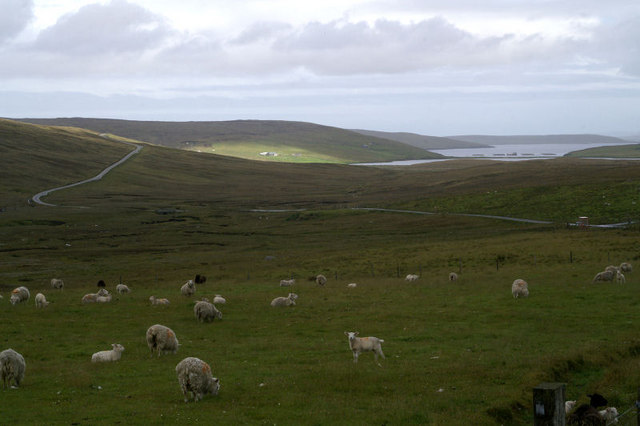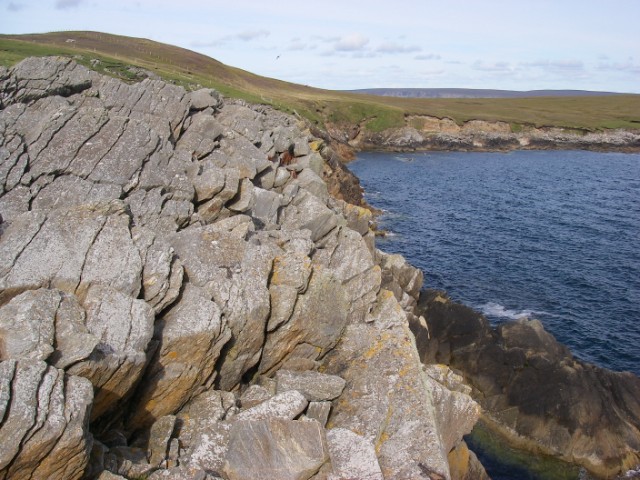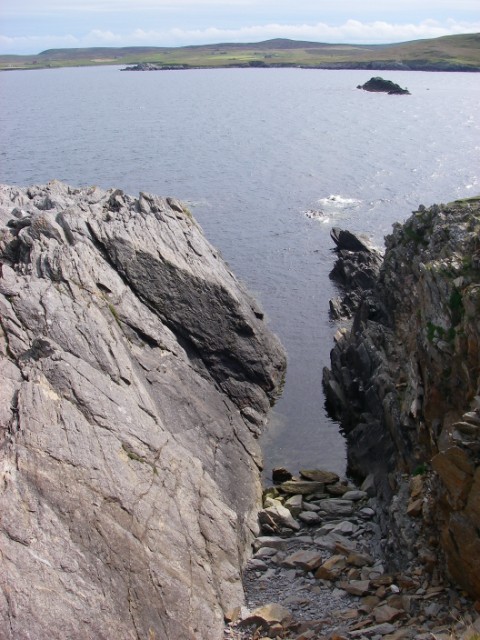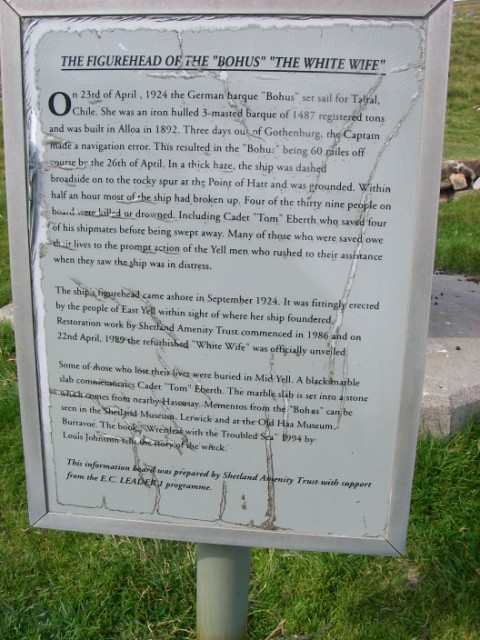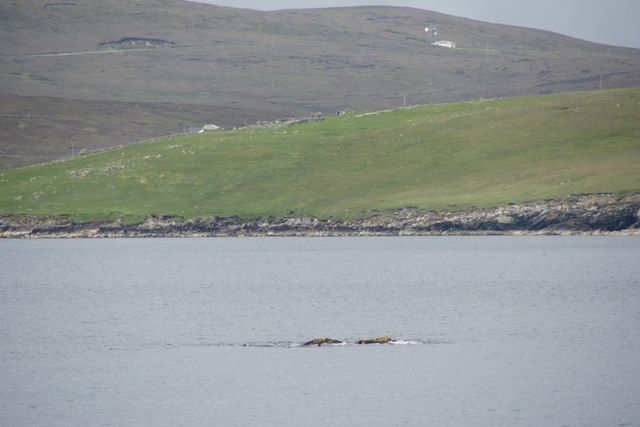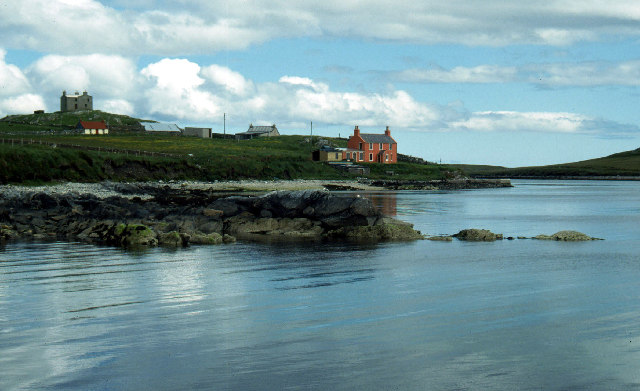Skerry of the Hoga
Island in Shetland
Scotland
Skerry of the Hoga
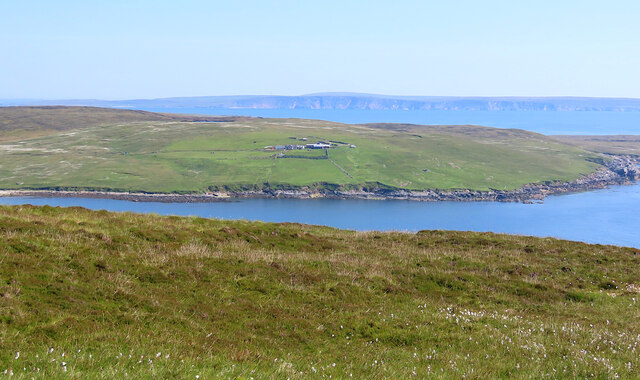
Skerry of the Hoga is a small island located in the Shetland archipelago, off the northeastern coast of Scotland. It lies approximately 3 kilometers southwest of the larger island of Whalsay. The island is uninhabited and covers an area of about 27 hectares.
Skerry of the Hoga is characterized by its rugged and rocky terrain, with steep cliffs rising up to 50 meters above sea level. The island is largely devoid of vegetation, except for some grasses and hardy shrubs that manage to grow in the crevices of the rocks. It is frequented by a variety of seabirds, including puffins, razorbills, and fulmars, which nest on the cliffs during the breeding season.
The island is also home to a small population of grey seals, which can often be seen basking on the rocky shores. The surrounding waters are teeming with marine life, making it an excellent spot for fishing and diving enthusiasts.
Access to Skerry of the Hoga is limited, as there are no regular ferry services or infrastructure on the island. However, it can be reached by private boat or chartered tours from nearby Whalsay or other parts of Shetland. Visitors are advised to take caution when exploring the island, as the terrain can be treacherous and the cliffs are often exposed to strong winds.
Skerry of the Hoga offers a unique and untouched natural environment, providing a haven for wildlife enthusiasts and those seeking solitude amidst the rugged beauty of the Shetland Islands.
If you have any feedback on the listing, please let us know in the comments section below.
Skerry of the Hoga Images
Images are sourced within 2km of 60.550322/-1.0132246 or Grid Reference HU5485. Thanks to Geograph Open Source API. All images are credited.
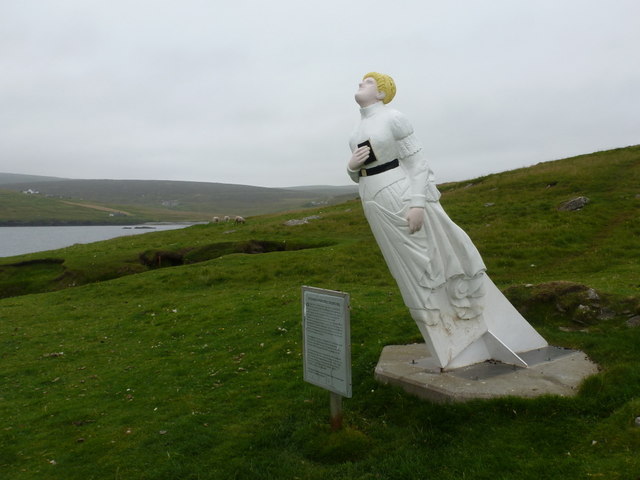
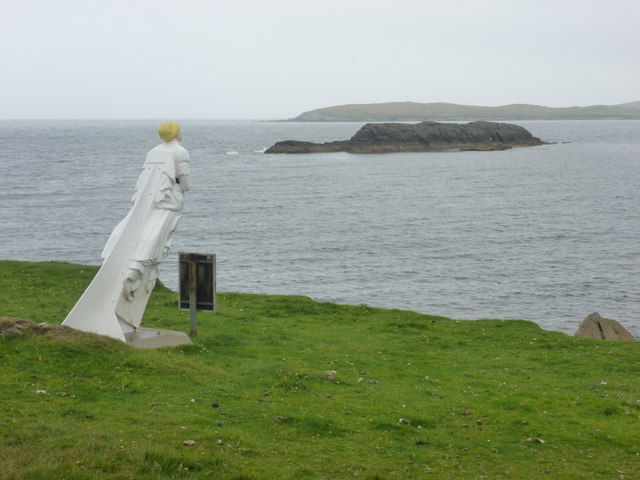
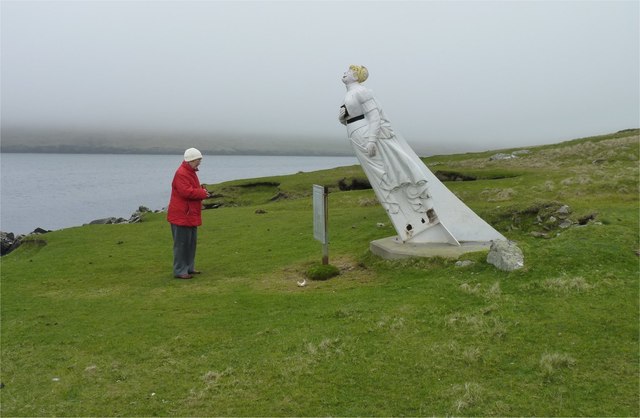
![Figurehead of the "White Wife" According to local tradition (and thus published many times) The White Wife (or White Lady) of Otterswick is said to be a German lady.
According to her life records we have to say that Bertha is a British girl or more correctly a Scottish girl, &quot;born in Grangemouth of German parents&quot;.
She was the figurehead of the steel barque Bertha built in 1892 by Grangemouth Dockyard Co., Grangemouth, as yard no. 163. Her dimensions were: 74,11×11,70×6,88 metres [248&#039;2&quot;×38&#039;4&quot;×22&#039;4&quot;] and with a tonnage of 1653 GRT (1499 NRT and 2600 DWT). She was launched at the shipyard of Grangemouth Dockyard Co. for Joh. H. Soost, Hamburg on July 6th, 1892 and assigned the official German signal RJQD.
She was named after Bertha, the eldest daughter of Joh. H. Soost, and this should be the proper name of The White Lady.
In 1899 she was sold to Captain M. Dietrich, Hamburg, and thereafter changed hands several times. In her great days until 1912 she did a lot of long distance runs such as 1904 from Lizard Point to Seattle in 154 days, 1906 from Lizard Point to Sydney in 117 days and again in 1909 in 114 days or in 1910 from Sydney to Falmouth f/o in 129 days.
In 1912 she was sold to Sweden changed hands several times and ended up with Förnyade Ångfartygs AB Viking, Gothenburg, for SEK 500.000. She was then renamed Bohus and assigned the official Swedish Reg. No. 5903 and signal KBCV. Captain at that time was Mr Ragnar Erik Nyberg, Stockholm. Bertha was bound to the Baltic Sea, mostly sailing in Swedish and Finnish waters.](https://s0.geograph.org.uk/photos/60/69/606956_9287ed4c.jpg)
Skerry of the Hoga is located at Grid Ref: HU5485 (Lat: 60.550322, Lng: -1.0132246)
Unitary Authority: Shetland Islands
Police Authority: Highlands and Islands
What 3 Words
///frightens.clean.added. Near Ulsta, Shetland Islands
Nearby Locations
Related Wikis
Aywick
Aywick is a small settlement on the east side of Yell, an island forming part of the Shetland Islands north of Scotland.The naturalist Bobby Tulloch was...
Otterswick
Otterswick is a hamlet on the island of Yell in the Shetland Islands, on the inlet of Otters Wick. It is on the east side of the island. There is also...
Gossabrough
Gossabrough is a coastal hamlet, wick and ness on the southeast side of the island of Yell, Shetland, Scotland. The Wick of Gossabrough lies between the...
Burra Voe
Burra Voe (Old Norse: Borgavagr, Broch Bay) is sheltered bay (voe) at the southeast corner of the island of Yell. The village of Burravoe (HU525795) is...
Burravoe
Burravoe is a community on the north shore of Burra Voe, in the south-east part of the island of Yell in the Shetland Islands, Scotland. The name Burravoe...
Mid Yell
Mid Yell is a coastal settlement on the island of Yell, the second largest of Shetland Islands, Scotland. Mid Yell, the largest settlement on the island...
Old Haa Museum
The Old Haa of Brough in located in Burravoe, Yell, Shetland, Scotland. Built for Robert Tyrie, a merchant, in 1672, houses the local museum for Burravoe...
Hascosay
Hascosay (Scots: Hascosay; Old Norse "Hafskotsey") is a small island lying between Yell and Fetlar in the Shetland Islands, Scotland. == Geography and... ==
Have you been to Skerry of the Hoga?
Leave your review of Skerry of the Hoga below (or comments, questions and feedback).
